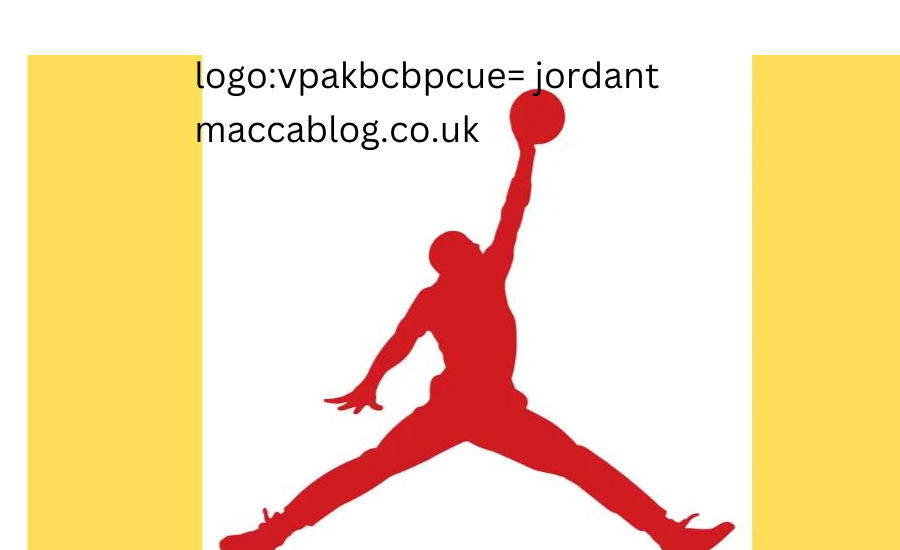Creating a logo:vpakbcbpcue= jordan isn’t just about slapping together some shapes and colors; it’s about crafting a visual identity that speaks volumes about your brand. Whether you’re a startup looking to make a mark or an established business wanting to refresh your image, understanding the intricacies of logo design is crucial. Let’s dive into everything you need to know about creating a compelling logo.
What is a Logo?
Definition and Importance
logo:vpakbcbpcue= jordan emblem, or symbol used to aid and promote public identification and recognition. Think of it as the face of your business. It’s often the first thing people see and remember about your brand. A well-designed logo can convey trust, professionalism, and quality.
Types of Logos
There are several types of logos to consider:
- Wordmarks: These logos consist of the company’s name in a distinct font. Examples include Google and Coca-Cola.
- Lettermarks: Similar to wordmarks but use initials instead. Think IBM or HBO.
- Pictorial Marks: These are icons or symbols that represent the brand, like Apple’s apple or Twitter’s bird.
- Abstract Marks: These logos use abstract forms to convey the brand’s essence, such as the Pepsi logo.
- Mascots: Illustrated characters that represent the brand, like the KFC Colonel.
- Combination Marks: A mix of words and symbols, such as the Burger King logo.
- Emblems: Text inside a symbol or icon, like the Starbucks logo.
History of Logos
Early Beginnings
logo:vpakbcbpcue= jordan dates back to where symbols were used to represent families, clans, and trades. These early marks evolved from simple carvings and stamps to more intricate designs.
Evolution Over Time
With the advent of the industrial revolution, logos became a necessity for businesses to stand out. The 20th century saw a surge in creative logo design, influenced by modern art movements. Today, logos are a blend of artistic creativity and strategic branding.
Elements of a Great Logo
Simplicity
A great logo is simple and easily recognizable. Overly complex logos can be confusing and hard to remember.
Relevance
Your logo should align with your brand’s message and industry. A playful logo might suit a toy company but not a law firm.
Memorability
An effective logo is memorable and makes a lasting impression. Think about the Nike swoosh – simple, yet unforgettable.
Timelessness
Trendy designs might look good now, but a timeless logo will look good for decades. Aim for longevity over fashion.
The Psychology Behind Logos
Colors and Their Meanings
Colors evoke emotions and convey messages. For example, blue often signifies trust and professionalism, while red can evoke excitement and passion.
Shapes and Their Impact
logo:vpakbcbpcue= jordan perception. Circles can imply community and unity, while sharp edges like triangles might convey strength and power.
Fonts and Their Influence
Fonts can change the tone of your logo. Serif fonts are traditional and trustworthy, sans-serif fonts are modern and clean, and script fonts are elegant and luxurious.
Logo Design Process
Research and Inspiration
logo:vpakbcbpcue= jordan research your industry and gather inspiration. Look at competitors and identify what works and what doesn’t.
Conceptualization
Sketch out ideas and concepts. This is the brainstorming phase where creativity flows freely.
Design and Iteration
Use design software to bring your ideas to life. Iterate on your designs, refining them based on feedback.
Feedback and Finalization
logo:vpakbcbpcue= jordan, clients, or focus groups. Use this input to make final adjustments.
Common Mistakes in Logo Design

Overcomplication
Complex logos can be hard to reproduce and recognize. Keep it simple.
Ignoring Scalability
Your logo should look good at any size, from a business card to a billboard.
Lack of Originality
Avoid clichés and aim for a unique design that sets you apart from competitors.
Poor Color Choices
Ensure your color choices complement each other and are suitable for your industry.
Case Study: Successful Logos
Apple
Apple’s logo is a testament to simplicity and elegance. The minimalist design is recognizable worldwide and conveys innovation and quality.
Nike
The Nike swoosh is iconic and embodies movement and speed. It’s a perfect fit for a brand associated with sports and athleticism.
McDonald’s
The golden arches are synonymous with McDonald’s. The logo’s simplicity and bold color scheme make it instantly recognizable.
The Role of Technology in Logo Design
Design Software
Tools like Adobe Illustrator and Photoshop are industry standards for logo design, offering powerful features to create professional logos.
AI and Machine Learning
AI tools are revolutionizing logo design, providing automated suggestions and enhancements based on design principles and trends.
Trends in Logo Design
Minimalism
Less is more in modern logo design. Minimalist logos are clean, simple, and versatile.
Hand-Drawn Logos
Hand-drawn logos convey authenticity and craftsmanship, making them popular among artisanal brands.
Responsive Logos
Logos that adapt to different screen sizes and formats ensure consistency across all digital platforms.
How to Choose a Logo Designer
Freelancers vs. Agencies
Freelancers can be a cost-effective option for smaller projects, while agencies offer comprehensive services and expertise for larger projects.
Portfolio Evaluation
Review portfolios to assess the designer’s style and versatility. Ensure their previous work aligns with your vision.
Budget Considerations
Set a budget that balances quality and affordability. Remember, a good logo is an investment in your brand’s future.
DIY Logo Design Tools
Online Platforms
Platforms like Canva and LogoMaker allow you to create logos without professional design skills. They offer templates and easy-to-use tools.
Pros and Cons of DIY
DIY tools are cost-effective and quick but may lack the uniqueness and professional quality of a custom design.
Logo Redesign: When and Why?
Signs It’s Time for a Change
If your logo looks outdated or no longer aligns with your brand’s message, it might be time for a redesign.
Balancing Tradition with Modernity
A redesign should retain elements of the original to maintain brand recognition while updating it for modern appeal.
Protecting Your Logo
Trademark Registration
Registering your logo as a trademark protects it from being used by others without permission.
Legal Considerations
Ensure your logo doesn’t infringe on existing trademarks and seek legal advice if necessary.
Conclusion
Crafting a great logo is a blend of art and strategy. It’s about creating a visual identity that resonates with your audience and stands the test of time. Whether you’re designing your own logo or hiring a professional, understanding the principles of effective logo design will help you create a mark that truly represents your brand.
FAQs
What makes a logo timeless?
A timeless logo is simple, versatile, and free from trendy elements that may become outdated. It should convey the brand’s essence in a way that remains relevant over time.
How do colors impact logo perception?
v and can influence how a brand is perceived. For example, blue often conveys trust, while red can signify excitement and urgency.
Can I design a logo myself?
Yes, you can design a logo yourself using DIY tools. However, for a unique and professional look, hiring a professional designer is recommended.
How often should a logo be redesigned?
A logo should be redesigned when it no longer aligns with the brand’s message or looks outdated. This could be every 5-10 years, depending on industry trends and brand evolution.
What are the legal steps to protect a logo?
To protect your logo, register it as a trademark with the relevant authorities. This ensures you have exclusive rights to use the logo and can take legal action against unauthorized use.
